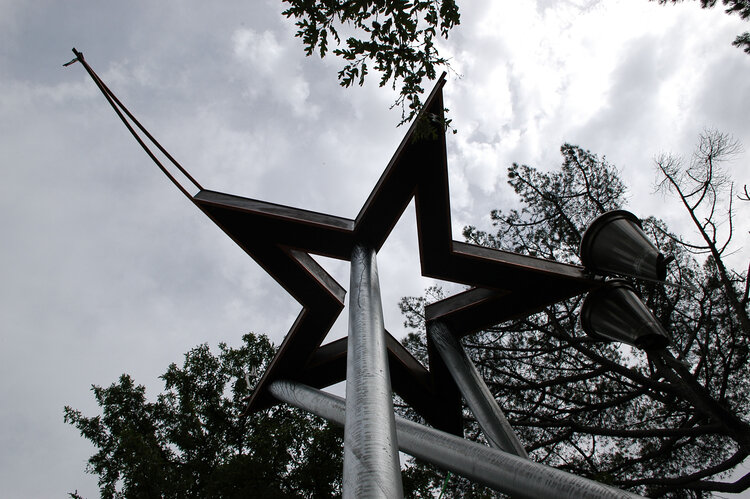Gilberto Zorio è sicuramente una delle personalità più importanti della scena artistica italiana con Pistoletto, Fabro e Merz, tra i fondatori dell’Arte Povera. His project Fontana arbitraria si riallaccia ad una tradizione ed esperienza artistica vecchia di trenta anni mostrando allo stesso tempo, ed in modo convincente, i cambiamenti che, rispetto ad allora si sono verificati nell’arte, nello spazio pubblico di oggi.
In the context of the discussion on the current possibilities and perspectives of art in public space, the artist deliberately draws on the motif of the fountain, which—just think of medieval art—is the oldest form of artwork in public space. A symbol of wealth and superfluous abundance, the fountain has always represented an important point of encounter between humans and nature. In contemporary art, we have numerous examples that attest to the revival of the fountain motif—consider, for instance, the German artist Tobias Rehberger or the Swiss artist Roman Signer.
Gilberto Zorio has developed a project inspired by the theme “art, nature, and energy”—a project that, both conceptually and aesthetically, meets the standards of quality demanded internationally for art in public space.

